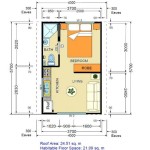Unlock the Beauty of Greenery with Essential Wood Indoor Planter Boxes
Elevate your indoor space with the allure of nature by incorporating wood indoor planter boxes. These versatile containers offer an eco-friendly and visually appealing solution to enhance any room's ambiance. Discover the essential aspects to consider when selecting and using wood indoor planter boxes to create a thriving indoor ecosystem.
1. Material and Durability
Wood is an enduring and aesthetic material for indoor planter boxes. Choose durable wood varieties like teak, cedar, or pine that can withstand moisture and humidity without warping or rotting. The wood's natural grain patterns and textures add warmth and character to your interiors.
2. Drainage and Ventilation
Adequate drainage is crucial for plant health. Choose planter boxes with drainage holes in the bottom to allow excess water to escape, preventing root rot. Additionally, proper ventilation helps prevent fungal growth and promotes oxygen circulation, ensuring optimal conditions for root development.
3. Size and Proportion
Consider the size of your plants and the available space when selecting planter boxes. Ensure the box is large enough to accommodate the plant's roots comfortably, providing room for growth. Proportionally, the planter box should complement the size of the plant and balance the aesthetic of your room.
4. Shape and Design
Wood indoor planter boxes come in various shapes and designs. Rectangular boxes provide a classic and versatile option, while round or hexagonal boxes add a touch of whimsy. Choose a shape that complements the overall style of your room and personal preferences.
5. Finishing and Treatment
Consider finishing the wood indoor planter box to protect it from moisture and enhance its appearance. Apply a water-resistant polyurethane or lacquer to seal the wood and prevent water damage. Alternatively, you can opt for a natural finish that showcases the wood's natural beauty.
6. Drainage Tray
To protect floors from excess water, use a drainage tray underneath the wood indoor planter box. This tray collects any excess water that drains from the box, preventing stains or damage to your floors.
7. Plant Selection
When choosing plants for your indoor planter box, consider the amount of light available in the room, as well as the specific plant's needs. Plants that thrive in low light, such as Snake Plants or Peace Lilies, are suitable for rooms with limited natural light. For brighter areas, opt for plants like succulents or Ferns.
Conclusion
Incorporating wood indoor planter boxes into your living space can add a touch of elegance, natural beauty, and improved air quality. By considering the essential aspects outlined in this article, you can select and maintain a beautiful and thriving indoor ecosystem that will enhance your living space for years to come.

Diy Modern Planter Box Stacy Risenmay

Wooden Box Planter From Wood Planters Indoor

Diy Indoor Planter Box In 7 Simple Easy Steps

How To Protect Indoor Wood Planter Box

Wooden Planter Box Indoor Or Outdoor Made From By Lewisdean 245 00 Boxes Diy Wood Planters

Wooden Planter With Mexican Tile Indoor And Outdoor Flower Box Home Garden Decoration Pot Custom Denmark

You Can Build This Large Indoor Planter Right Now Neatly Living

Costway 50 In Wood Planter Box With Trellis Mobile Raised Bed For Climbing Plant J9d3703 The Home Depot

Diy Modern Planter Box Stacy Risenmay

Anraja 67 In Wood Brown Planter Box With Trellis Outdoor For Plants Kd 68bb The Home Depot








